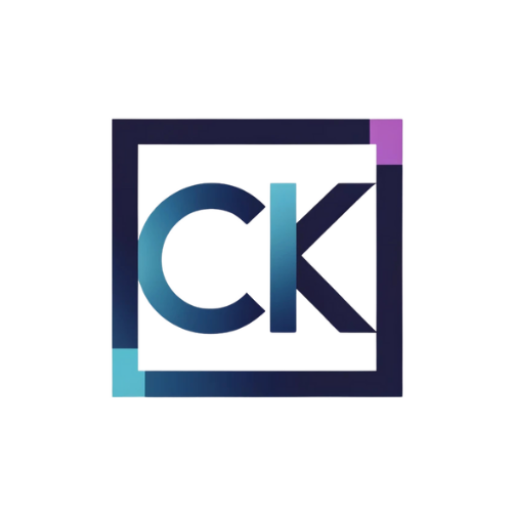Anúncios
Career advice for 2025 looks different: will AI filters or human eyes decide your next role?
You need clear ways to stand out fast. Hiring managers skim resumes in 5–10 seconds and some roles meet AI screens first. This guide shows how to use metrics, STAR examples, and proof of work so you get noticed.
Inside, you’ll find practical, evidence-based tips on finding fit beyond titles, building authentic networks, being discoverable online, and negotiating full packages. Use sources like Glassdoor and LinkedIn for salary research and focus on total rewards: flexibility, growth, and learning.
There are no guarantees, but short, time-boxed experiments and small steps help you learn faster in a fast-moving world. Adapt tactics to your goals, industry, and stage, and consider professional guidance when a complex choice arises.
Introduction: Career advice strategies for a fast-changing 2025 job market
Most people’s career paths no longer run straight; embracing that gives you new options. This turns varied experience into an advantage.
Anúncios
You should treat non-linear paths as proof you can adapt. Titles differ by organization, so map your skills to multiple roles. Focus on one clear metric per project when you translate work into results.
Why today’s paths are non-linear—and how that helps you
Non-linear moves expand the opportunities you can credibly target. They also give you richer stories to share in interviews and on profiles.
What employers skim first and how AI tools filter applications
Employers form impressions fast. Headline, recent results, and relevant skills matter most. AI filters favor specific language that mirrors the posting. Use clear phrases, not keyword stuffing.
How to use this listicle: adapt, test, and iterate
Pick one opportunity and tailor your materials for 20 minutes. Send a second, generic version to a similar role. Compare response rates and adjust.
- Save time by using niche boards and company pages over large job boards.
- Apply to a mix of realistic and stretch roles to learn what fits.
- Let your goals and constraints guide the next step, then iterate.
There are no guarantees. Adjust to your context and consider professional guidance when choices get complex. Pick one thing from this list to test this week and take the next step with confidence.
Find fit beyond job titles: broaden your search to open doors
Avoid getting stuck on one label. Look past titles and scan where your strengths actually show up—the same work can be called very different things at other organizations.
Map transferable skills to multiple roles across industries
List 8–12 adjacent roles that match what you do today. Group those by industry to spot where your strengths travel best.
Quick step: write three outcomes you deliver and match each to two role names. That gives you clear lines to rewrite bullets fast.
Read job descriptions to spot patterns, gaps, and keywords
Scan 10 job posts and highlight repeated requirements. Those repeated phrases become your keyword bank and training plan.
“Patterns in postings show what hiring teams actually want—watch for tools, metrics, and verbs.”
Use niche boards and company pages as signal over noise
Start with company career pages and niche boards to find fresher postings that don’t reach big aggregators.
- Try synonyms for titles to surface hidden matches.
- Track one missing tool or certification and close it with a short course this month.
- Create a modular resume that swaps a few bullets per role family.
Keep your goals in view. Pick one promising path now and one to research next so you keep doors new opportunities open while you test where you fit best.
Build relationships that create opportunities
Small, honest conversations with peers can lead to big shifts in your path. Many roles are filled through referrals and word-of-mouth, so your network matters more than ever.
Make networking authentic: seek advice, not a job
Start with short, specific messages that ask for advice on a topic they care about. This lowers pressure and makes replies more likely.
“Frame outreach as asking for insight — it often leads to warmer introductions than a direct job request.”
Prepare two or three easy questions, such as “What skills do you see missing in applicants?” or “Which trends in our field matter most right now?”
Show up where your field gathers—events, Slack, Discord, meetups
Identify one in-person group and one online community. These are the places where people trade tips and flag roles early.
- Set a weekly goal: two thoughtful messages and one 15-minute chat to fit your time and energy.
- Track each conversation and send a brief thank-you noting one thing you learned.
- Give support back—share a link, offer feedback, or connect two people—so relationships stay balanced.
Find a mentor for perspective on direction and one warm intro, and be ready to mentor someone behind you. Steady, kind follow-ups compound over time, but remember there are no guarantees—adapt your cadence to your energy.
For practical tips on how to build and maintain strong business bonds, see this guide to build business relationships.
Be discoverable: your personal brand and proof of work
You increase your chances of new opportunities by making your profile searchable and your work easy to evaluate.

Refresh LinkedIn for search by writing a headline that pairs one target role with a clear outcome you’ve delivered. Add 8–12 keywords from active job posts into your About and Experience sections, woven into natural sentences.
Build a one-page portfolio that shows impact
Show three short projects with before/after metrics so your experience reads as value, not tasks. Include demos, decks, code, or case studies in a concise “proof of work” area.
Borrow patterns—then make them yours
Study profiles a few steps ahead in your industry to spot tone, scope, and skills to feature. Don’t copy—adapt their structure to reflect your growth and the roles you want.
- Link your portfolio in email signatures and pinned posts to invite inbound interest.
- Highlight recent learning and development that supports advancement goals.
- Refresh quarterly so your profile evolves with projects and the way companies describe in-demand roles.
For a practical primer on building a visible personal brand, see personal branding for job seekers.
Career advice strategies you can apply to resumes and applications
Small, precise edits can turn a generic resume into a role-ready snapshot employers notice fast. Spend 20–30 minutes tailoring a base resume so AI screens and human eyes see fit within 5–10 seconds.
Tailor quickly: align skills with the posting using clear language
Build one base resume, then swap 2–4 bullets and a few keywords per job. Mirror key terms from the posting so AI recognizes alignment without stuffing.
Lead with outcomes: quantify results and use the STAR method
Start each Experience bullet with an action, a number, and the impact on the role or team. Craft two STAR stories per job: one showing teamwork, one showing how you solved constraints.
Optimize for skimmability and AI screening
Use clear headings, white space, and a tight top third that summarizes fit. Keep bullets short. Time-box tailoring to save time and apply more often.
Use cover letters to connect the dots and address concerns
Write a 3–5 paragraph cover letter that adds context—gaps, pivots, or seniority—without repeating your resume. Show genuine interest in the organization and close with one clear next step.
“Lead with metrics, mirror job language, and keep edits focused — small changes drive better responses.”
- Include one team-focused bullet per role.
- Ask a mentor or peer for quick feedback before you apply.
- Track which framings get interviews and double down on what works.
Interview with clarity and calm
Interviews are a chance to show how you think, not just what you’ve done. Before you accept a slot, ask the recruiter about the process: format, stages, and estimated time so you can plan focused prep.
Know the format and ask for the process
Different formats require different prep: behavioral, case, or technical. It’s okay to ask for sample topics, the number of rounds, and who you’ll meet.
Knowing this saves time and reduces surprises. It also helps you tailor one or two projects to discuss.
Practice aloud and get specific feedback
Practice 8–10 common questions out loud and record one session. Mock interviews with a peer or a mentor help you tighten stories and pacing.
- Pick two projects that show outcomes, trade-offs, and how you worked with a team.
- Narrate your reasoning on problem questions so interviewers see your approach.
- Schedule a same-day debrief to collect immediate feedback.
Think out loud and treat interviews as two-way assessments
Explain your thinking so people can follow your logic. Prepare a short question bank to evaluate fit: success metrics, day-to-day work, cross-functional partners, and ramp expectations.
“Notice how the conversation makes you feel — energized or drained — and let that inform your decision.”
Plan a calm routine: sleep, simple notes, and logistics so you arrive focused. Afterward, send a brief thank-you that recaps one thing you learned and one way you’d add value.
Navigate offers and negotiate the full package
An offer is a conversation starter. Start by researching market ranges for your role and location using Glassdoor and LinkedIn, and by talking to current or former employees when possible.
Research pay and ranges; open with enthusiasm
Open with genuine enthusiasm for the opportunity and the team. Then state that you want to align on compensation.
Example: “I’m excited about this role and would like to discuss a salary range that reflects market rates and my experience.”
Frame asks around what you need to make the role work
Present requests as needs to make the role feasible. Be specific and collaborative. Offer two or three trade-offs you can accept, like flexible start dates or adjusted scope.
Consider total rewards: flexibility, growth, learning, and impact
List the full value: salary, bonus, equity, time off, flexibility, and a learning budget. Compare offers side-by-side against your goals and long-term advancement.
- Anchor your ask inside a credible band from market data.
- Show how your work will support the company and team goals.
- Decide your next step criteria in advance to avoid pressure.
“Keep negotiations respectful and paced — the world of offers is iterative and context-dependent.”
Conclusion
Your path will look different from everyone else’s, and that difference is a strength you can shape.
Think long game: set clear goals, take small steps, and keep steady relationships that help you learn and find opportunities.
This week, pick one practical step—refresh your LinkedIn headline, draft a STAR story, or schedule a short mentor chat—and track responses, interviews, and offers so you measure what matters.
Professional development is ongoing. Write a one-page note about the experience and skills you want to grow, and run a quick quarterly check-in on roles and organizations that match your values.
There are many ways to find fit. Ask for support when you need it—people usually want to help if you’re specific. Your next step doesn’t have to be perfect; it just has to be yours.



